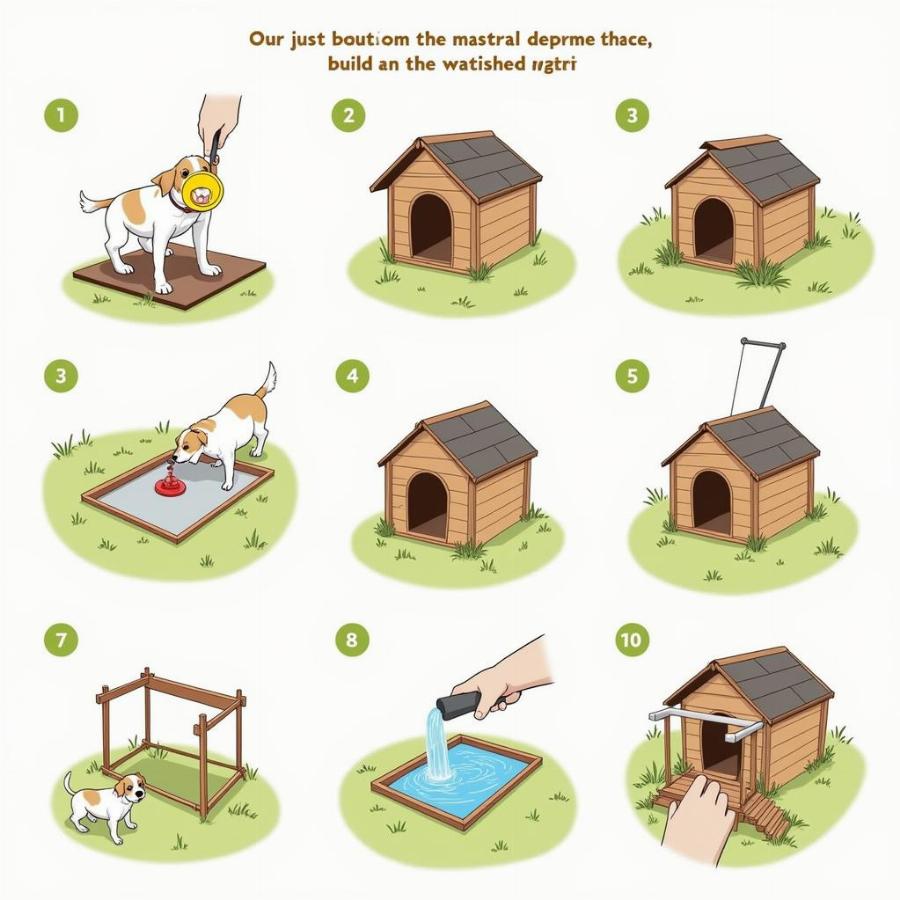For devoted dog owners, ensuring their furry companions’ comfort is paramount, especially during harsh weather conditions. While many opt for pre-built dog houses, there’s a special satisfaction in crafting a personalized haven with your own hands. This article delves into the world of insulated dog house blueprints, guiding you through the process of building a cozy and weather-resistant sanctuary for your beloved pet.
Choosing to build your own insulated dog house offers a range of benefits. You can customize the size, style, and features to perfectly suit your dog’s breed, size, and needs. Plus, opting for insulation ensures your furry friend stays warm in the winter and cool in the summer, making it a comfortable retreat all year round.
Designing the Perfect Insulated Dog House: Key Considerations
Before diving into blueprints and construction, it’s crucial to consider several factors that will influence your dog house design:
1. Dog Size and Breed:
- Small Breeds: Compact, single-room designs with ample insulation.
- Medium Breeds: Larger single rooms or dual-compartment designs for added space.
- Large Breeds: Spacious designs with ample headroom and potentially multiple rooms.
2. Climate and Insulation:
- Cold Climates: Prioritize thick insulation, wind-blocking features, and elevated floors.
- Hot Climates: Opt for designs that promote ventilation and shade, with lighter insulation.
3. Materials:
- Wood: A classic choice for its durability, insulation properties, and aesthetic appeal.
- Plastic: Lightweight, waterproof, and easy to clean, making it a low-maintenance option.
- Composite Materials: Offer a blend of durability, insulation, and weather resistance.
Choosing the Right Insulated Dog House Blueprints
Once you’ve outlined your requirements, it’s time to explore insulated dog house blueprints. Numerous resources are available online and in carpentry books, offering a diverse range of designs:
- Simple Single-Room Blueprints: Ideal for beginners, these plans outline a basic square or rectangular structure with a single entrance and insulation options.
- A-Frame Blueprints: These designs often feature a sloped roof for rain and snow runoff, maximizing interior space.
- Dual-Compartment Blueprints: Offering a separate sleeping area and a sheltered porch, these designs provide extra comfort and weather protection.
When selecting blueprints, ensure they include detailed instructions, material lists, and clear illustrations. Consider your skill level and available tools to choose a plan that aligns with your capabilities.
Building Your Insulated Dog House: Step-by-Step Guide
Once you have your chosen blueprints and gathered the necessary materials, it’s time to embark on the construction process:
- Lay the Foundation: Create a level base for your dog house using concrete blocks, pressure-treated lumber, or gravel.
- Frame the Walls and Roof: Cut the lumber according to your blueprints and assemble the walls and roof frame.
- Install Insulation: Apply insulation to the interior walls and roof, ensuring a snug fit to prevent heat loss.
- Attach the Exterior Walls and Roof: Securely attach the exterior siding and roofing material, ensuring a watertight seal.
- Cut and Install the Door: Create a doorway that provides easy access for your dog while minimizing drafts.
- Add Finishing Touches: Paint or stain the exterior to protect the wood and enhance its appearance. Consider adding a porch, window, or decorative elements.
 Dog House Construction in Progress
Dog House Construction in Progress
Essential Tips for Building an Insulated Dog House
- Prioritize Safety: Always wear appropriate safety gear, such as gloves and eye protection, when using power tools.
- Measure Twice, Cut Once: Accuracy is key in carpentry, so double-check all measurements before making cuts to avoid costly mistakes.
- Ensure Proper Ventilation: Even in insulated dog houses, ventilation is crucial to prevent moisture buildup. Include strategically placed vents or gaps for airflow.
- Choose Durable Materials: Opt for weather-resistant materials that can withstand the elements and provide long-lasting protection.
- Consider Elevation: Raising the dog house off the ground helps prevent flooding and improves insulation.
A Cozy Haven for Your Furry Friend
Building an insulated dog house is a rewarding project that provides your furry companion with a comfortable and secure retreat. By following detailed blueprints and considering your dog’s needs, you can create a personalized haven where your pet can thrive year-round.
FAQs about Insulated Dog Houses
1. What type of insulation is best for a dog house?
Several insulation options work well for dog houses, including fiberglass batts, foam board insulation, and reflective insulation. The best choice depends on your climate and budget.
2. Do I need to heat my insulated dog house?
In most cases, a well-insulated dog house will provide sufficient warmth for your pet. However, in extremely cold climates, you might consider adding a safe and regulated heating source.
3. How do I keep my insulated dog house clean?
Regular cleaning is essential for maintaining hygiene. Choose materials that are easy to clean and consider adding a removable floor or bedding for convenient cleaning.
Looking for More Expert Advice on Dog Care?
Beaut Dogs is your ultimate resource for all things dog-related. We provide trustworthy and insightful information on breed characteristics, care tips, and product recommendations to help you be the best dog parent you can be. For personalized advice and answers to your specific questions, reach out to our team at [email protected]. Let Beaut Dogs guide you on your journey to providing the best possible care for your beloved canine companion!